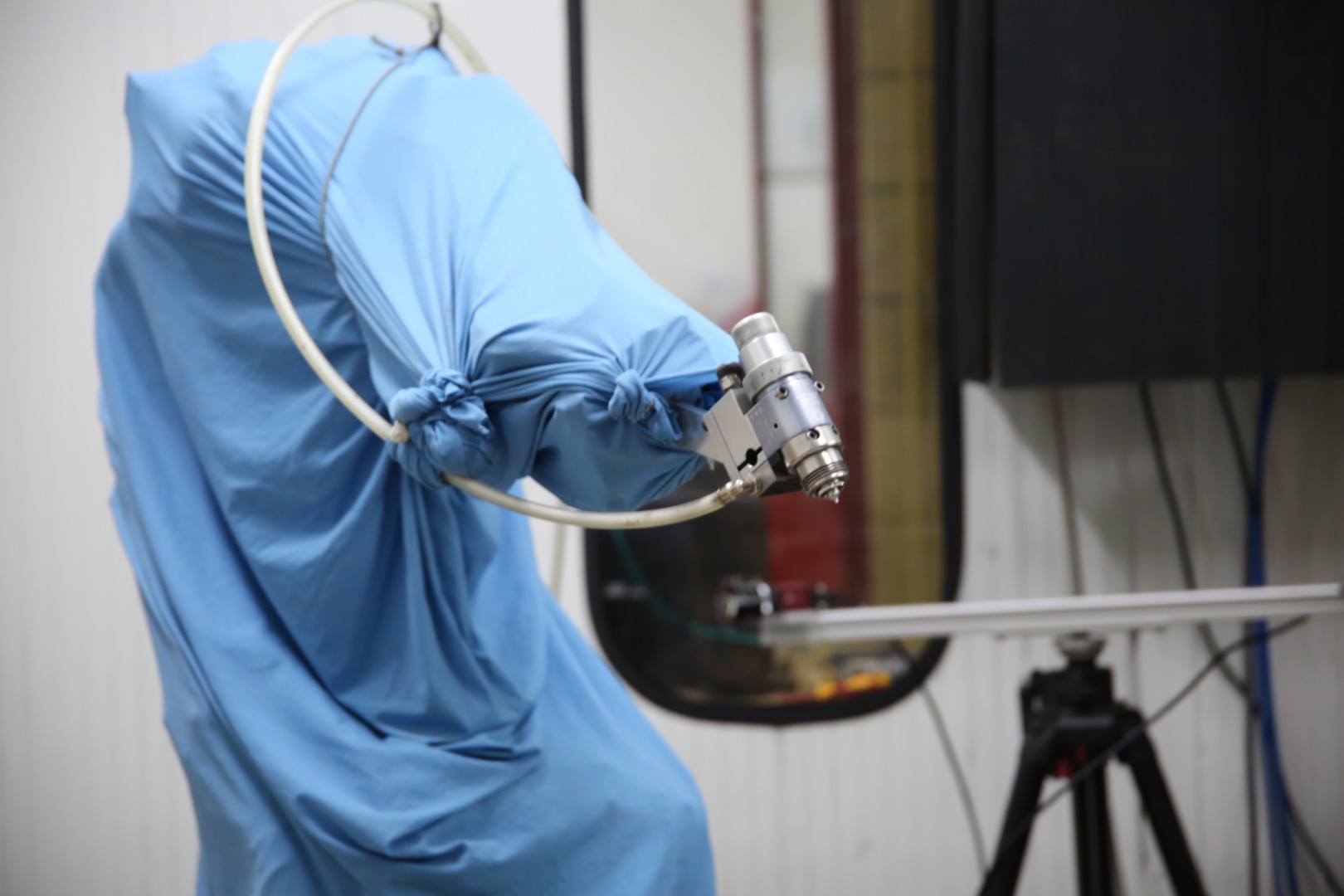INESC TEC develops a painting robot that collaborates with humans
The researchers of INESC TEC’s Centre for Robotics and Intelligent Systems (CRIIS) alongside the Portuguese company TALUS developed a painting robot that collaborates with humans.
31st October 2019
From now on, we can watch humans and robots collaborate in an effective way in the coating of complex and large-scale products in Portugal. Due to a funding of approximately EUR 200.000 from the European Commission’s Horizon 2020 research and development programme, these two entities were able to develop a new collaborative robotic cell.
Painting robots already existed, but one of their main limitations was related to their inability to paint large-scale products or those that had a complex geometry. The collaborative robotic cell developed by the researchers in the European project FLEXCoating managed to overcome this limitation, promoting the cooperation between humans and robots through 3D sensors for workspace monitoring, object recognition and location, trajectory programming by demonstration, among other technologies.
With the development of this technology, the robot and the human operator paint the given component at the same time, therefore, nullifying the need for the robot to be isolated in a traditional robotic cell, protected by physical barriers that did not allow the collaboration in painting.
“Before starting the coating process, the operator teaches the robot how to paint by demonstrating it. During the painting process, a 3D vision sensor examines, recognises and locates the object to be painted and corrects the trajectory of the robot that was previously taught. In addition to this, there is also a system that monitors a number of hazardous areas that detect intrusions to the robot’s workspace, allowing the human operator and the robot to work in a collaborative way. There is also a secure monitoring system that allows the human operator to indicate the restart of the process in an ergonomic way,” explains Rafael Arrais, researcher of INESC TEC’s CRIIS.
In order to develop the robot, the researchers used an automatic decision platform developed in the HORSE project, funded by the European Commission, which selects the appropriate coating program, allowing the human operator to monitor the different parts of the process.
The collaborative robotic cell developed in the FLEXCoating project has already been successfully tested at the Portuguese company FLUPOL, a Portuguese SME specialised in functional application of coatings, and will contribute to increased efficiency and flexibility in the production process, with an estimated increase in the production capacity of around 15% and a 10% optimisation of the operators’ working time due to the collaboration with the painting robot.
The researchers of CRIIS who participated in this project were Rafael Arrais, Paulo Ribeiro, Carlos Costa, Luís Rocha, Manuel Silva and Germano Veiga.
FLEXCoating was one of the experiment projects selected by an Open Call of the European project H2020 HORSE under the number 680734. More information on the European project HORSE and FLEXCoating can be found here.
The researchers mentioned in this news piece are associated with INESC TEC.


